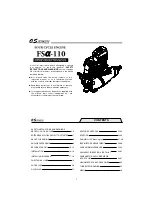
SEBU8605-01
69
Maintenance Section
Re
fi
ll Capacities
g01987816
Illustration 42
Typical API symbol
Terminology
Certain abbreviations follow the nomenclature of
“SAE J754”. Some classi
fi
cations follow “SAE J183”
abbreviations, and some classi
fi
cations follow the
“EMA Recommended Guideline on Diesel Engine
Oil”. In addition to Perkins de
fi
nitions, there are other
de
fi
nitions that will be of assistance in purchasing
lubricants. Recommended oil viscosities can be found
in this publication, “Fluid Recommendations/Engine
Oil” topic (Maintenance Section).
Engine Oil
Commercial Oils
NOTICE
Perkins require the use of the following speci
fi
ca-
tion of engine oil. Failure to use the appropriate
speci
fi
cation of engine oil will reduce the life of
your engine. Failure to use the appropriate spec-
i
fi
cation of engine oil will also reduce the life of
your aftertreatment system.
Table 16
Classi
fi
cations for the 1200 Series Industrial Engine
Oil Speci
fi
cation
API CJ-4
ACEA E9
ECF-3
API CJ-4 and ACEA E9 oil categories have the
following chemical limits:
•
1 percent maximum sulfated ash
•
0.12 percent maximum phosphorous
•
0. 4 percent maximum sulfur
The chemical limits were developed in order
to maintain the expected life of the engine
aftertreatment system. The performance of the
engine aftertreatment system can be adversely
affected if oil that is not speci
fi
ed in table 16 is used.
The life of your Aftertreatment system is de
fi
ned by
the accumulation of ash on the surface of the
fi
lter.
Ash is the inert part of the particulate matter. The
system is designed in order to collect this particulate
matter. There is a very small percentage of particulate
matter that is left behind as the soot is burnt. This
matter will eventually block the
fi
lter, causing loss
of performance and increased fuel consumption.
Most of the ash comes from the engine oil which is
gradually consumed during normal operation. This
ash is passes through the exhaust. To meet the
designed life of the product, the use of the appropriate
engine oil is essential. The oil speci
fi
cation that is
listed in table 16 has low ash content.
Maintenance intervals for engines that use
biodiesel –
The oil change interval can be adversely
affected by the use of biodiesel. Use oil analysis in
order to monitor the condition of the engine oil. Use
oil analysis also in order to determine the oil change
interval that is optimum.
Note: These engine oils are not approved by
Perkins and these engine oils must not be
used:CC, CD, CD-2, CF-4, CG-4, CH-4, and CI-4.
Lubricant Viscosity Recommendations
for Direct Injection (DI) Diesel Engines
The correct SAE viscosity grade of oil is determined
by the minimum ambient temperature during
cold engine start-up, and the maximum ambient
temperature during engine operation.
Refer to illustration 43 (minimum temperature) in
order to determine the required oil viscosity for
starting a cold engine.
Refer to illustration 43 (maximum temperature) in
order to select the oil viscosity for engine operation at
the highest ambient temperature that is anticipated.
Generally, use the highest oil viscosity that is
available to meet the requirement for the temperature
at start-up.
















































